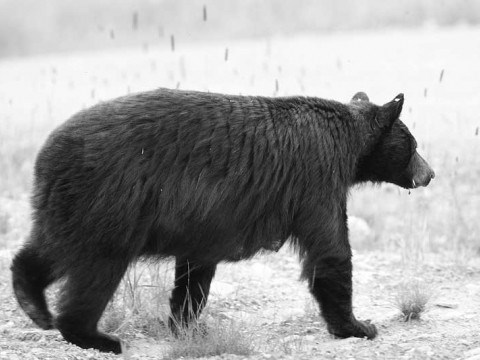Sometime between 9 a.m. on Aug. 20 and 6 p.m. on Aug. 22, Whistler Mountain resident female black bear Jeanie has lost her final cub (out of a three-cub litter).
The week prior she and her seven-month cub were trying to avoid by re-bounding the typical build-up of bears on the north slope in response to the early ripening of a bumper berry crop. She had three serious physical confrontations with the same tagged male two days prior to Aug. 20 and during a bear viewing trip that morning she was observed chasing off (after hearing both bears fighting in the forest) the same male again.
Jeanie also has had to avoid Katie, a rival dominant female roughly the same age (18 years). Mother bears are always more vulnerable to barren females (without cubs) when competing for feeding space.
Jeanie lost her first two cubs earlier during the June breeding season likely to male(s) attempting to force her back into breeding status. In my 24 years of bear observations, I have never seen a mother bear lose a cub to male aggression after the breeding period (late May to late July).
If it was the male, I don't see that he had anything to gain by killing the cub because Jeanie would not (to my knowledge) breed so late in the season. It is possible that the family was separated by the stress and confusion of a serious confrontation with the male. In 2004, Jeanie was separated from her daughter (but still had her son) during early August from the same kind of male confrontations (but not as severe). She re-associated with her daughter, amazingly, after the entire month of August had passed.
When I found Jeanie on Aug. 22 (2009) at 6:02 p.m., I followed her for nearly 3 km on foot at a distance of 20-50-metres. Her scat was normal and she did not seem agitated while she fed non-stop on berries. Her cub also appeared healthy and large (35-45 lbs.) at the time of his loss or separation. I continue to investigate the situation.
Meanwhile, dominant female black bear Katie, travels between berry patches on the north slope of Whistler Mountain.
Her obvious larger abdomen and hind quarters (than Jeanie's) are result of this summer's early ripening of a bumper berry crop.
High temperatures during late July through early August followed by a brief, wet cooling period produced one of the most uniform berry crops at high elevations (> 1,200-metres) I have measured since 1996.
Katie bred in late June and will forage continuously all daylight hours (and even overnight) taking advantage of peak berries through September.
Her body will decide to implant the fertilized eggs she's carrying in suspension through Aug-Nov.
Katie has gained more weight and at a faster rate than Jeanie because Jeanie's foraging was constantly interrupted by nursing and maternal care for her cub. Katie and Jeanie overlap their annual ranges approximately 80 per cent on the north side of Whistler Mountain.
Since 2006, Jeanie's status is weakening and Katie's is becoming stronger. It's possible that Jeanie is older than Katie, which could account for her loss in the ability to cope with a changing ski area bear population.




